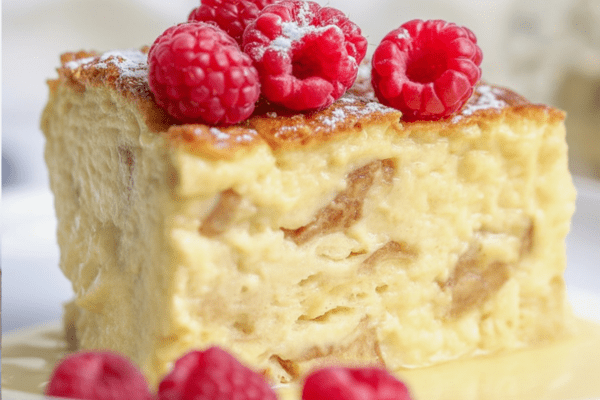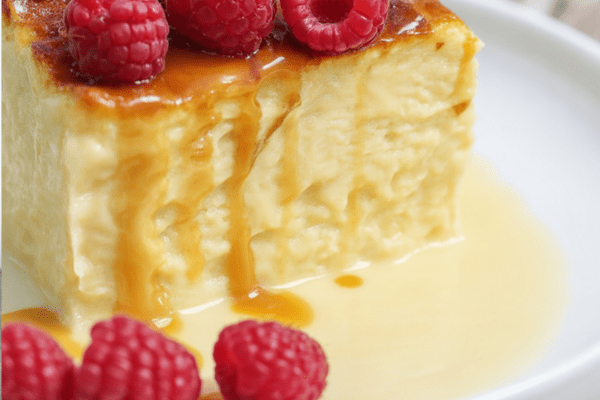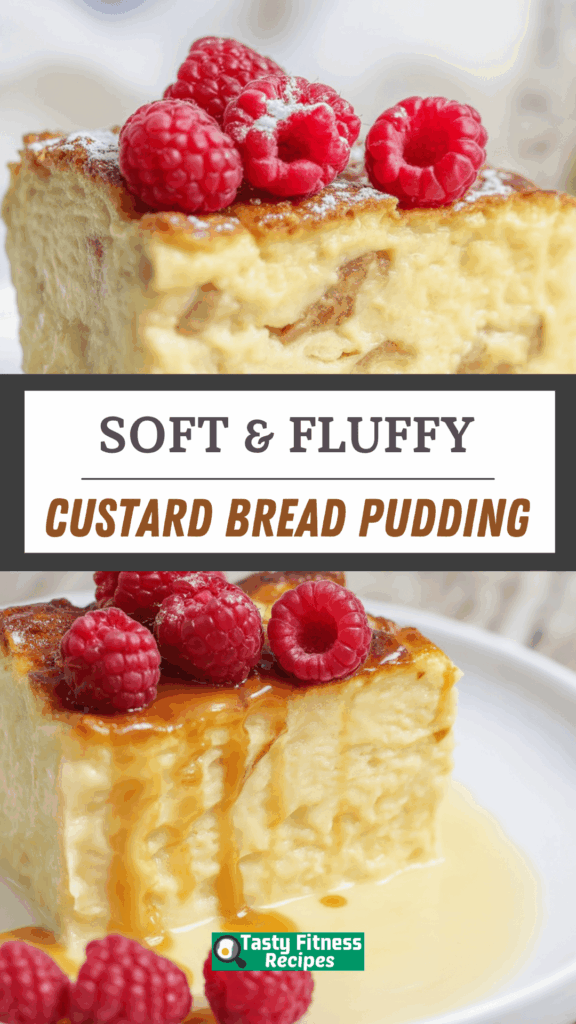Bread pudding always brings back memories of slow, comforting family meals. I love how it transforms leftover bread into something special and soul-warming. My version is rich, custardy inside, with a golden crust that shatters just right under your spoon.

If you’re after that old-fashioned, tender texture with a bit of crunch on top, you’re in the right place. Over the years, I’ve tweaked my process to get that balance perfect—and I’m excited to share all my personal tips with you.
What Makes This Recipe a Family Favorite
I’ve made plenty of bread puddings over the years, but nothing beats the creaminess you get when the bread is properly soaked. Early on, I was impatient and baked too soon, ending up with dry, sad cubes inside.
Now I always tell friends: let the bread really drink in the custard. That’s the trick to getting every bite meltingly tender. I’ve tested it for holidays and casual Sunday lunches—it’s always a hit.
I also love the way the crust crisps up while the inside stays silky. It feels fancy without much fuss, which is my favorite kind of dessert.
Ingredient Notes from My Kitchen
- Stale or Dry Bread
I usually use old French bread from the local bakery. But honestly, any sturdy bread works—brioche is a real treat here. I’ve even used leftover sandwich bread in a pinch. Just make sure it’s dried out so it absorbs the custard properly. - Whole Milk and Heavy Cream
Don’t skimp on these. Whole milk gives body, while cream makes it lush. I tried using lower-fat milk once, and it just didn’t feel as indulgent. - Eggs
Eggs are the backbone of the custard. They set everything into that beautiful, creamy texture. - Vanilla
I use real vanilla extract. It perfumes the whole pudding with that unmistakable bakery smell.
If you’re making this for a special dinner, splurge on a good loaf or fresh cream. But even with everyday ingredients, this turns out beautifully.

Step-by-Step: How I Make It at Home
Drying the Bread
This step matters more than you’d think. I cut my bread into cubes and leave them out for a day or two if I can plan ahead. But life doesn’t always work that way—so sometimes I toast them gently in the oven.
The goal is dry, not toasted. Just enough so they’re thirsty for the custard.
Mixing the Custard
I combine milk, cream, eggs, sugar, and vanilla. Here’s my tip: really whisk it. I mean, stand there for a good few minutes until it’s smooth and there’s no egg separation. I find that five to seven minutes of gentle whisking makes all the difference.
I usually put on some music or chat with whoever’s in the kitchen while I do this.
Soaking the Bread
Once the custard is ready, I pour it over the bread cubes and give them a gentle toss so every piece is coated. Don’t be too rough or they’ll fall apart too soon.
I like to soak it overnight in the fridge if I can. The bread turns into this pillowy, custard-soaked wonder by morning. If I’m short on time, I’ll go at least two hours—but overnight is my gold standard.
Baking for the Perfect Texture
I bake it in a water bath. Trust me on this—it’s worth the extra step. It keeps the heat gentle and even, so the eggs set smoothly without curdling.
I cover the dish with foil to trap the steam at first, then remove it near the end for that caramelized top. Mine usually takes about an hour and a half, but I always check with a toothpick. It should come out clean, but the center should still feel softly set.
If the top browns too quickly, I just pop the foil back on for a bit.

How I Serve It
I let the pudding rest for about 10 or 15 minutes after baking. It firms up nicely so you get neat slices instead of a runny mess.
At home, I pour warm vanilla sauce over each serving. My family loves it with fresh raspberries or a drizzle of caramel sauce. Some days I’ll make blueberry compote if berries are in season.
Other favorite toppings:
- Strawberry or cherry sauce
- Whipped cream
- A scoop of vanilla ice cream (for the real treat)
It’s such a versatile dessert. We’ve served it for Christmas dinner, but I’ve also made it on a regular weeknight when we had stale bread to use up.
Why I Always Use a Water Bath
If you’ve ever baked a custard or cheesecake and had it crack or turn grainy, you’ll know why I swear by this. The water bath keeps the heat even and gentle so the eggs don’t seize up.
Here’s what I do:
I set my baking dish inside a bigger roasting pan. Then I pour water in until it’s about two-thirds up the sides of the pudding dish. Cold tap water is fine. Cover with foil for most of the bake.
It might seem fussy, but it prevents that dreaded curdled texture. I’d rather wash an extra pan than ruin dessert!
Personal Tips and Advice
- Always taste your custard mix before pouring it on the bread (just a little). It’s your last chance to adjust sweetness or vanilla.
- Plan ahead if you want the overnight soak. It makes prepping for a dinner party so much easier.
- Watch the top while baking. I’ve burned mine before when I forgot to check. Foil is your friend here.
- If your bread pudding is too wet in the center, just bake it longer. There’s no rush.
Custard Bread Pudding

This luxurious bread pudding delivers a creamy interior with a beautifully golden crust. It’s a comforting dessert or indulgent breakfast that’s easy to master with the right steps.
Ingredients
16 oz (454g) French bread loaf
- For the Custard:
- 3 ¾ cups whole milk
- 1 ½ cups heavy cream
- 7 large eggs
- 1 teaspoon vanilla extract
- 1 ¼ cups granulated sugar
- Zest from half an orange (optional)
Instructions
- Begin by cutting the French bread into 1.5-inch cubes. It’s important that the bread is dry—either toast the cubes lightly in the oven or let the bread sit out for a day or two until it’s stale.
- In a large mixing bowl, combine the milk, cream, eggs, vanilla, and sugar. Whisk everything together thoroughly until the eggs are fully incorporated and there are no visible strands of egg whites. You may also add the orange zest at this point if using.
- Pour the custard mixture into your baking dish and gently stir in the bread cubes, ensuring they’re fully coated. Don’t worry if there appears to be excess liquid—this will be absorbed during the soak.
- Cover the dish and refrigerate for at least two hours, or ideally overnight, to allow the bread to soak up the custard completely.
- Set your oven to 350°F (175°C). Prepare a water bath by placing the baking dish, still covered with foil, inside a larger roasting pan. Fill the pan with hot water until it reaches halfway up the sides of the inner dish. This step is key to preventing the custard from curdling.
- Bake the covered pudding for about 1 hour and 30 minutes, or until a toothpick inserted in the center comes out clean. Remove the foil and return it to the oven to brown the top—keep an eye on it to avoid burning.
- Once finished, let it rest briefly before serving. It's delicious with a drizzle of vanilla sauce, fresh berries, or a swirl of caramel.
Notes
- These baking times are based on a glass 2-quart dish, so times may vary slightly with different materials or sizes.
- Ensuring the bread is dry helps the custard absorb properly without making the texture soggy.
Nutrition Information
Yield
12Serving Size
1Amount Per Serving Calories 274Total Fat 16gSaturated Fat 9gTrans Fat 0gUnsaturated Fat 6gCholesterol 150mgSodium 83mgCarbohydrates 26gFiber 0gSugar 26gProtein 7g
TastyFitnessRecipes.com, occasionally offers nutritional information for recipes contained on this site. This information is provided as a courtesy and is an estimate only. This information comes from online calculators. Although tastyfitnessrecipes.com attempts to provide accurate nutritional information, these figures are only estimates.
A Little Final Note
This bread pudding isn’t fussy, but it rewards a bit of patience. Let the bread soak properly. Bake it gently. And share it with people you care about. That’s what makes it so good.
Try other Pudding recipes: